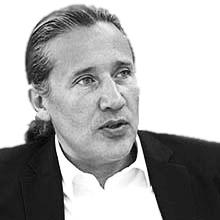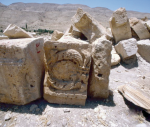You are here
Investing in resilience
Nov 17,2015 - Last updated at Nov 17,2015
On November 8 and 9, the government of Jordan and the UN Development Programme convened the Resilience Development Forum at the Dead Sea.
The event was attended by ministers and officials from Egypt, Jordan, Lebanon and Turkey, and by many officials and representatives from donor countries, aid organisations and civil society.
Animated by round-table discussions and high-level panels, the event closed with participants uniting behind a single agenda for building resilience in the countries directly affected by the Syrian war, and in Syria itself.
The agenda is a breakthrough. It offers an opportunity to draw differing approaches to aid — humanitarian, development, short-term, long-term — behind one common vision and goal.
Speaking at the end of the forum, Jordan’s minister of planning and international cooperation, Imad Fakhoury, summed it up well: the agenda is a crucial step towards securing the future of people and communities affected by one of the most destructive crises the world has seen in decades.
An agenda for resilience
The agenda is founded on and informed by five fundamental principles.
Firstly, aid for the crisis should use to the full the synergies between humanitarian and development assistance.
Secondly, aid must respect the dignity and capabilities of the people that aid seeks to help.
Thirdly, aid should reinforce — not replace — the capacities of local institutions and people themselves.
Fourthly, aid should seek new and inclusive partnerships. And fifthly, aid must safeguard social cohesion and seek to foster peaceful cooperation.
With these principles to underpin all aid in response to the Syrian conflict and its impact on the region, the agenda identifies 10 key areas for action.
Firstly, and above all — given the millions displaced and the unmeasured and continuing destruction — we must strengthen the resilience of people, communities and response capabilities inside Syria.
There and across the region we must increase responsiveness and effectiveness by planning together, rising above the conventional distinctions between humanitarian and development aid.
We must ensure more multi-year financing, and we must strengthen those local systems, institutions and structures that strive or have the potential to do so much for the displaced and host communities.
We must increase our support for programmes that deliver basic services sustainably and continuously, not just temporarily.
We must mobilise the private sector better, to bring its capabilities and energy to bear on the vast challenge, and we must do more to remove the red tape, which prevents more enterprise, and private and public investment.
Complementing these elements, we must do more to help affected communities access jobs and livelihoods.
And mindful of the tensions that can arise between host communities and the displaced, we must cultivate local capacities to resolve conflict.
Lastly, we must also begin the planning and building of capacities that will be needed for reconstruction and recovery in Syria in the future.
Even while the war continues, such opportunities may arise in limited areas. And eventually, one day, peace will come.
What it takes
It is not wrong to say we must. Donor governments and governments in the region, local and international aid organisations, civil society from within the region and from outside: for the sake of the millions whose lives have been shattered by the war; for the sake of Syria and its neighbours affected by the war, collectively we must do more and do it better.
And we know what works and in what areas we need to develop new approaches and new ideas.
A highlight of the forum was an exhibition showcasing 50 projects from across the region that are innovative and contribute positively to building resilience.
The diversity of projects is impressive and reflects the range of what needs to be done in order to build resilience and provide lasting benefit.
Some of the showcased projects focused on social and economic needs. For example, the Danish Refugee Council has been building community centres for vulnerable communities to reinforce their self-reliance and help with social cohesion.
The UN Food and Agriculture Organisation has been implementing projects to support the revival of dairy farming in the Beqaa Valley and to provide access to farming field schools.
And the UN Settlements Agency (UN HABITAT) has worked on integrating displaced-persons camps into towns and cities.
Other projects in the exhibition showed the role technology can play. For example, a German geosciences institute, Bundensanstalt für Geowwissenschaften und Rohstoffe, has been working to improve groundwater management in Jordan and Lebanon.
The International Rescue Committee organised an initiative to develop a mobile app for refugees to map and rate local services.
And the World Food Programme and the UN Relief Agency have used technology to modernise approaches to in-kind and cash assistance.
These examples are just some of what is being done and — more importantly — what can be done.
What all concerned must do now is to put the Dead Sea resilience agenda into action.
The writer is UNDP sub-regional development coordinator for the Syrian crisis. He contributed this article to The Jordan Times.















